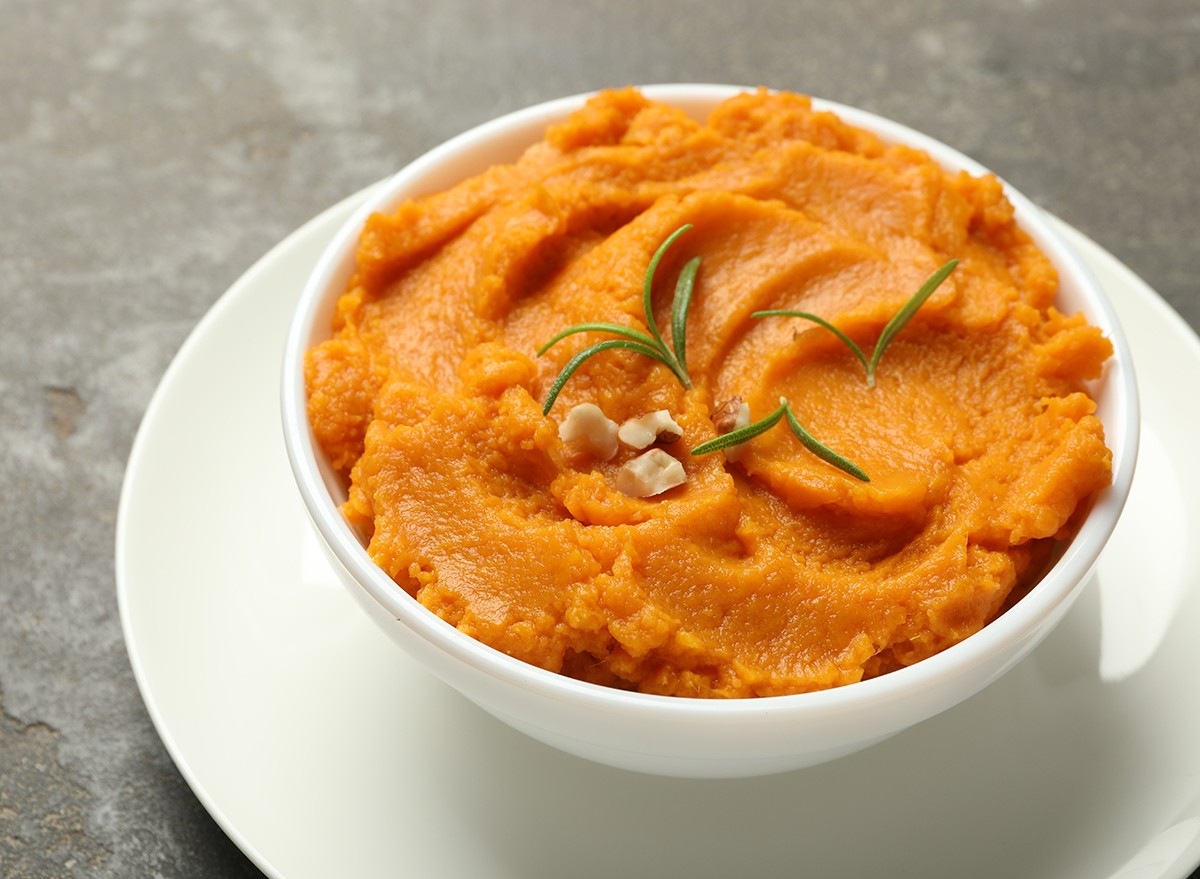The No. 1 Food Doctors Say You Should Add to Your Diet This Fall

It’s sweet potato season, which makes it the perfect time to shine a spotlight on this humble, versatile superfood. “Sweet potatoes are something of a miracle food, and a big reason that Okinawa is one of the five original blue zones,” says Blue Zones expert Dan Buettner. “For the longest time, their purple variant of sweet potato (which they call imo) is most of what Okinawans ate—as in, most of their calories came from this one crop—and despite eating what is technically a high-carb diet, these folks became some of the healthiest and longest-lived in the world!” Sweet potatoes have many incredible health benefits—here’s why you should be eating more of them, according to experts.
RELATED: The Healthiest Vegetable You’re Probably Not Eating.
Sweet Potatoes and Potassium

Sweet potatoes are packed full of potassium—more than a banana! “Sweet potatoes are among the healthiest common whole-food sources of potassium, which every cell in our body requires to function,” says Michael Greger MD, FACLM, via NutritionFacts.org. “In fact, they can be considered a superfood and are ranked as one of the healthiest foods on the entire planet. Sweet potatoes are among the healthiest and cheapest, with one of the highest nutrient-rich food scores per dollar. When picking out varieties at the supermarket, remember that a sweet potato’s nutritional content is tied directly to the intensity of its color. The more yellow or orange its flesh, the healthier it may be, and purple sweet potatoes are even healthier!”
Color Counts

Pay attention so the color of your sweet potatoes—the hue indicates health benefits. “Baked or mashed, sweet potatoes are a dish that brightens up any plate. Sweet potatoes have a deep orange-yellow color,” says the Mayo Clinic. “That color tells you sweet potatoes are high in the antioxidants known as carotenoids. One of the most studied is beta carotene. It’s a substance the body can use to make vitamin A, and it helps cells manage day-to-day wear and tear. Sweet potatoes are a source of potassium and vitamin A. These veggies also are a source of some B vitamins. And like many vegetables, they are a good source of fiber and relatively low in calories. One-half of a large sweet potato has just 81 calories.”
Boil Your Potatoes With Skin On

Keep the skin on your potatoes for maximum health benefits. “It’s actually better to boil them to best preserve their nutritional content, but regardless of the cooking method, keep on the skin as its peel has nearly ten times the antioxidant power as the inner flesh (on a per-weight basis), giving them an antioxidant capacity approaching that of blueberries,” Dr. Greger says.
RELATED: Lower Your Cholesterol with This Common Food.
Immune Support

Sweet potatoes contain vitamin C, which supports immune health. “Sweet potatoes also provide vitamin B6 and vitamin C, which have powerful health benefits,” says UPMC HealthBeat. “Vitamin B6 bolsters brain development in children and brain function in adults. B6 also helps the body produce serotonin, a hormone that regulates mood and helps you cope with stress. Vitamin C is an antioxidant that protects your cells from free radicals.”
Upping the Health Benefits

Worries about blood sugar spikes? Combine the potato with more fiber. “Combine them with a good fat (like a vinaigrette) or add more fiber (ground flaxseed, for example) to help delay uptake of the carbohydrate into glucose in the body,” Barbara Olendzki, associate professor of population and quantitative health sciences at UMass Chan Medical School, tells USA TODAY. “For one medium sweet potato with Newman’s Balsamic Vinaigrette (1 Tablespoon) on top, you have 189 calories, 6g fat, 32 grams of carbohydrate, 3 grams of protein, 5 grams of fiber, and even have 1 mg of iron. Not bad, huh?”